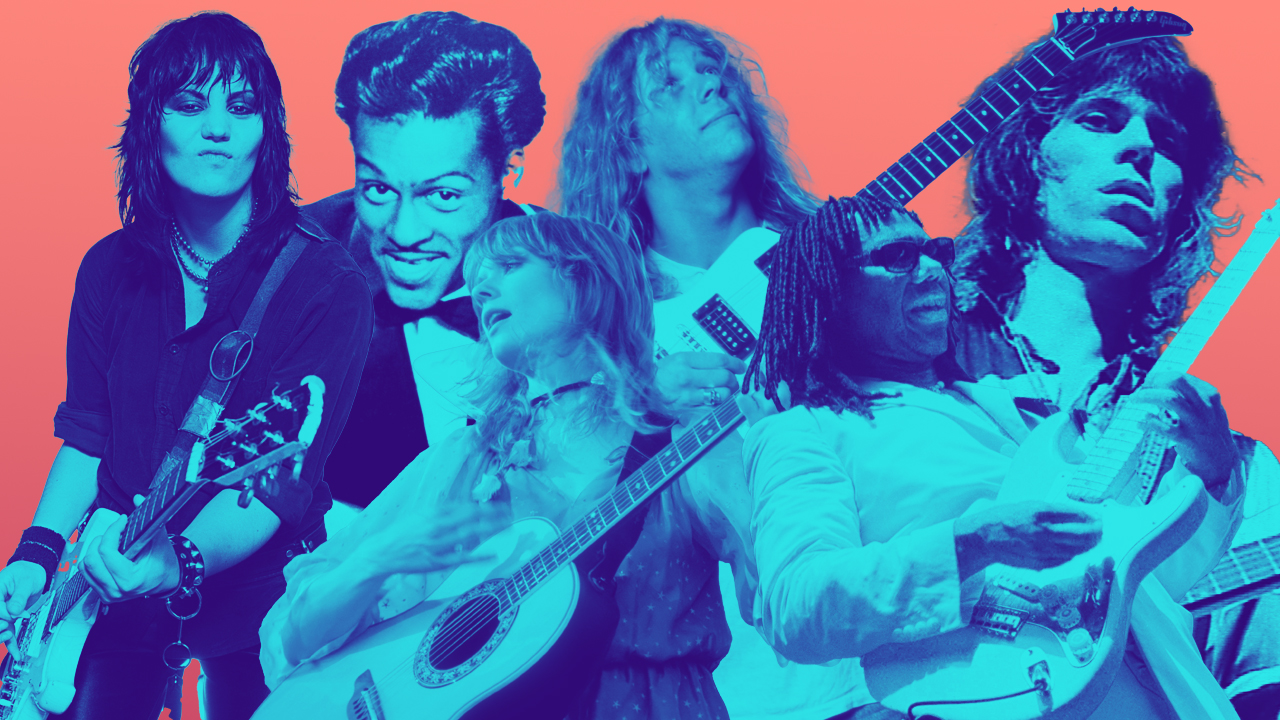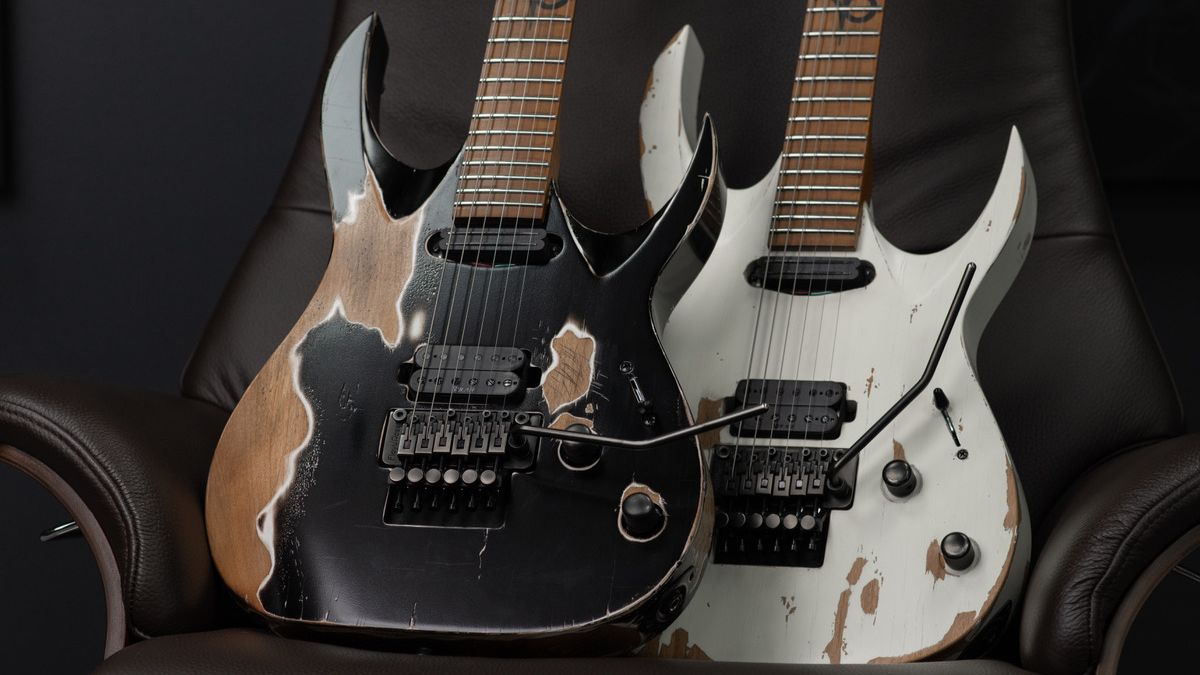The 50 greatest rhythm guitarists of all time
As voted for by you, here are the players who don’t necessarily need 16 bars and a spotlight solo to rubber-stamp their greatness

Here we are, folks, by democratic assent and the power vested in the popular vote, we present to you the top 50 rhythm guitar players in the world… ever.
And it gives us great delight to do so, not least because if there are any notable omissions they are all on you. That’s right, because with lists like these, someone’s favorite player – the guitarist who changed their life – will always be left off the list.
Who might otherwise have made this shortlist? Leo Nocentelli? We could mount a strong case for the Meters’ master of funk. Maybe people saw him as a lead player. Maybe that was the case for Eddie Hazel, too.
Certainly, a lot of the players on this list have made significant contributions to lead and rhythm playing, or even blur the line between the two. Dick Dale is another player we could make a case for, as well as Scotty Moore, and the father of boom-chicka-boom, Luther Perkins.
And we could go down the rockabilly family tree until arriving at Poison Ivy, who refigured it for horror freaks, and Brian Setzer, who has helped maintain rockabilly long into the iPhone era.
Looking at the category of rhythm guitar, and what it exists for, driving the song, giving it life, it’s always going to be a broad church, and here we have players from all quarters of guitar playing. There are acoustic folk singer-songwriters, punks, metal players, hard rockers, blues cats and more.
That is democracy in action, and it reminds us not to get too hung up on who isn’t on the list, it’s all about getting the top three right, and no one can argue with our podium… Surely.
All the latest guitar news, interviews, lessons, reviews, deals and more, direct to your inbox!
50. Carmen Vandenberg
Carmen Vandenberg’s playing skews towards the pyrotechnic when the occasion calls for ripping leads on an octave fuzz. But she was weaned on the blues, on the building blocks of rock guitar, and whether in the company of the arch guitar wrangler Jeff Beck or with Bones UK, she always finds the space in a song or a jam to introduce an electric energy via her chosen medium, the Fender Telecaster and the riff.
49. Bob Marley
Bob Marley is on the pantheon as a songwriter, with a cultural footprint extending way beyond his abilities as a rhythm guitarist. But make no mistake: they were crucial.
The offbeat chord stabs, single-note runs playing pat-a-cake with the bassline, chords rendered as percussion, all this helped popularize and establish the grammar and style of reggae rhythm guitar, and it translated to both acoustic and electric guitar. Either way, the guitar moved to his rhythm. In time, the world would, too.
48. John Lee Hooker
The guitar alone was not enough to contain John Lee Hooker’s prodigious appetite for rhythm. The beat went right through him, from head to toe, supplementing his groundbreaking electric blues recordings with a rhythmic stomp that gave it momentum.
Now evolved, blues guitar can sometimes be lost to the solo – the instinctive wherewithal to know which phrase works best when playing over an A chord, vibrato, bends, and the various trappings of lead guitar. But listen to Boogie Chillin’, to Boom Boom, to Down South Blues, and it returns the art form to the beginning, to the roots, from which rock rhythm guitar would grow.
47. Joan Jett
Joan Jett is one of those rare players whose recorded work always sounds like it’s on 10 no matter what the dials on the hi-fi are telling you. With the Runaways’ riotous melodies, and later the Wurlitzer gold of the Blackhearts, Jett was instrumental in breaking rock’s glass ceiling with a sound that could not and would not be contained.
Hers was a category 5 hurricane blowing in from a Music Man HD-130 2x12, every chord from her Gibson Melody Maker shaking the teeth out your head. But all the while, the hooks were there, the melodies riding high on defiance and febrile, start-of-the-summer energy.
46. Billie Joe Armstrong
There is something pneumatic about Billie Joe Armstrong’s physiology, something mechanical about that right arm of his, and it's helped Green Day’s goofball frenzies soar to the top of the charts, taking punk out of the club and into the stadium.
We can of course seek another forum to address his pristine song craft, but as a guitar player who understands the accumulative magic of a steady barrage of powerchords and eighth notes, building a swell for melody to surf upon, there are few better.
45. Jeff Hanneman
The Big Four’s master of the macabre and Slayer’s ace in the hole, the late Jeff Hanneman was one half of the most ferocious and artistically successful guitar partnership in heavy metal.
Writing a piece of music that is both memorable and evil at 202bpm is no mean feat, but that was Hanneman’s gift, tracks such as Angel of Death and War Ensemble his calling card.
There was a touch of Wes Craven or John Carpenter about him, in how tracks such as South of Heaven and Dead Skin Mask could chill the spine, audio horror for the morbidly inclined, those who prefer box-office thrash metal with the safety off.
44. Joni Mitchell
There are few players, if any, who have picked up the acoustic guitar and used open tunings as creatively and effectively as a songwriting tool. It was like Joni Mitchell hot-wired the instrument, finding nuances and complementary cadences that gave her extra colors to play with. And always the right ones.
That voice, such songwriting deserved nothing less. On tracks such as Little Green she will use fingerstyle, delicately assembling the melody and rhythm, on others such as Both Sides Now, she’d find a pocket of melody, a percussive rasp, and the sound was magic.
43. Johnny Ramone
Mastermind of a doo-wop speedball punk sound that gathered enough steam to drive a countercultural movement that transformed pop-culture, John William Cummings, aka Johnny Ramone, was the epitome of the rhythm guitarist. There were no leads required to supplement the Forest Hills quartet’s relentless fusillade of candied, bittersweet anthems.
The Ramones were a triumph of chaos and order – anarchy with a dress code, a hair cut too – playing with an abandon that was matched in kind by Ramone’s full-blooded but rhythmically honest downstrokes, sending powerchords and choked barre chords over the top, launched from a 1965 Mosrite Ventures II.
42. Bo Diddley
There’s a reason why Martin Scorsese often reaches for his Bo Diddley records when it comes time to score the movie. The moving image, editing – these are all art forms governed by rhythm, and one of the all-time rock ’n’ roll greats, Bo Diddley was steeped in it.
He had his own rhythm: the Bo Diddley beat, taking a clave hambone rhythm and electrifying it. Everything grooved on his records. And like his peers – the Little Richards and Chuck Berrys of this world – he had a three-dimensional charisma that geysered out from the speaker cone. His guitars often had square edges but there was nothing square about him.
41. Brad Whitford
Joe Perry and Steven Tyler might take the lion’s share of spotlight wattage whenever Aerosmith take to the stage but the Boston rock institution’s success was built on the recognition that rock ’n’ roll is a team sport.
In finding inventive, judicious, and just enough ways to complement Perry on lead, in acknowledging the authority of the snare drum hit and the sovereignty of the groove, Brad Whitford makes sure no one drops the ball on an Aerosmith jam.
His studio nous is legend. Weaned on the Beatles and the British invasion at large, he has a melodic sensibility that expands upon a solid blues vocabulary.
Jonathan Horsley has been writing about guitars since 2005, playing them since 1990, and regularly contributes to publications including Guitar World, MusicRadar and Total Guitar. He uses Jazz III nylon picks, 10s during the week, 9s at the weekend, and shamefully still struggles with rhythm figure one of Van Halen’s Panama.






